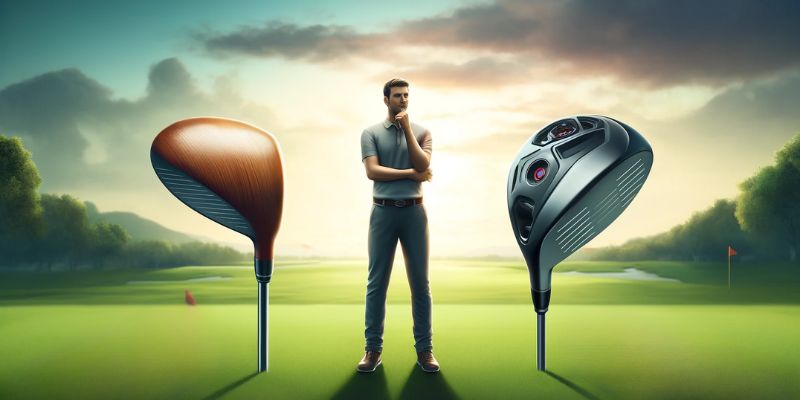Pros and cons of multi-material drivers, and how they have revolutionized the way golfers approach the game, providing advanced options that cater to various playing styles and preferences.
These drivers utilize a combination of materials to optimize performance, from reducing the golf club’s weight to enhancing its forgiveness.
In this article, we’ll explore the materials used in modern drivers, the benefits of composite materials, and the potential drawbacks of multi-material designs.
Materials Used in Modern Drivers
The evolution of golf driver technology has seen a significant shift towards the use of multiple materials in a single club.
Typically, multi-material golf drivers feature a blend of titanium, carbon fiber, tungsten, and sometimes even ceramics.
Titanium is prized for its strength-to-weight ratio, making it ideal for the club face.
Carbon fiber is used in the clubhead to reduce weight, which allows for greater speed and a larger sweet spot.
Tungsten is often added as a weighting material in the clubhead to lower the center of gravity, enhancing launch conditions and stability on off-center hits.
Benefits of Composite Materials
The use of composite materials in multi-material golf drivers offers numerous benefits. These include:
- Increased club speed: Lighter materials can increase swing speed without sacrificing control.
- Enhanced forgiveness: Strategic placement of materials like tungsten improves the balance of the club, making it more forgiving on mishits.
- Adjustability: Many multi-material drivers come with adjustable features that allow golfers to tailor the club to their specific needs, such as changing the loft or lie to suit different playing conditions or personal preferences.
These benefits make multi-material golf drivers a popular choice among both amateur and professional golfers, serving as a significant upgrade over traditional single-material drivers.
Potential Drawbacks of Multi-Material Designs
While there are many advantages to using multi-material golf drivers, there are also potential drawbacks to consider:
- Complexity and cost: The more complex construction of these drivers can make them more expensive to produce and purchase.
- Durability concerns: Different materials expand and contract at different rates, which can potentially lead to durability issues over time.
- Repairability: Multi-material drivers may be more difficult to repair if damaged due to the complexity of their design.
These factors can be significant considerations for golfers when choosing the right driver.
Choosing the right golf driver involves weighing the Pros and cons of multi-material drivers against your personal needs and budget.
With the right selection, a multi-material driver can be a perfect gift for any golfer looking to enhance their game, ensuring it finds a spot in every well-curated golf bag.
What is the main advantage of using a multi-material golf driver?
The main advantage is increased performance through optimized weight distribution, which enhances swing speed and forgiveness.
Are multi-material golf drivers suitable for beginners?
Yes, their increased forgiveness and adjustability make them excellent for beginners who are still refining their swing techniques.
How often should I replace my golf driver?
While it depends on usage and care, a good rule of thumb is to consider replacing your driver every 3-5 years to benefit from advances in technology.

